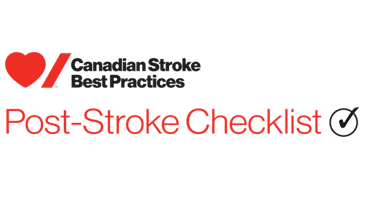Definitions and Descriptions
Context: Vascular Cognitive Impairment (VCI) is an overarching term that includes a range of clinical presentations and disease progression from very early mild/minor symptoms at one end of the spectrum to profound vascular dementia at the other extreme. Even within dementia, there are also stages including mild, moderate and severe, as defined by the Scottish Intercollegiate Guidelines Network (SIGN). SIGN publication number 168 addresses assessment, diagnosis, care and support for individuals with dementia and their carers (Scottish Intercollegiate Guidelines Network 2023). As such, it is challenging to define VCI simply and concisely.
Some have proposed the overarching term of ‘vascular cognitive disorders’, which may be considered in future versions of this guideline. For the purposes of these guidelines, the term “VCI” is intended to include a variety of conditions described in the literature, including “vascular Mild Cognitive Impairment” (v-MCI) whether single-domain or multi-domain, “vascular Cognitive Impairment, No Dementia (v-CIND)”, “vascular mild neurocognitive disorder”, “vascular major neurocognitive disorder”, “mixed dementia: (e.g., cerebrovascular disease with Alzheimer’s disease or other neurodegenerative diseases), and “Vascular Dementia” (VaD). Importantly, mixed dementia is the most common pathology causing dementia in older adults.
Vascular Cognitive Impairment
High-level public description: Vascular cognitive impairment is a condition of the brain and its blood vessels that causes challenges with cognitive abilities such as attention, memory, language, processing speed, judgement, and problem solving.
Public-facing definition: Vascular cognitive impairment (VCI) is a condition where damage to the blood vessels of the brain leads to injury of brain tissue, resulting in changes in thinking and memory. VCI may be caused by stroke, tiny clots that block small blood vessels in the brain, bleeding from small blood vessels in the brain, or blood vessel wall disease, resulting in a lack of oxygen and damage to brain cells. Risk factors for VCI may include vascular conditions such as stroke, heart failure, diabetes and high blood pressure, smoking; and modifiable risk factors for VCI more generally. These may include less education, hearing impairment, obesity, depression, physical inactivity, low social contact, excessive alcohol consumption, and air pollution (Livingston et al. 2020). VCI can cause symptoms that range from mild forgetfulness to more serious challenges with attention, memory, language, processing speed, judgement, and problem solving.
The most serious form of VCI is called vascular dementia (VaD). Vascular dementia can cause difficulty with everyday activities like getting dressed and bathing. Vascular dementia and Alzheimer’s disease can share some signs and symptoms, can exist separately or together, but they are not the same condition.
Scientific definition: Vascular cognitive impairment refers to a range of new or worsening cognitive deficits attributed to or accelerated by cerebrovascular injury (Paradise and Sachdev 2019).
- Cognitive deficits: The pattern of new or worsening cognitive deficits in VCI may encompass any or all cognitive domains, such as attention, learning and memory, language, perception, processing speed, or executive functions like social cognition, problem solving and decision making. VCI can also include impairments related to focal stroke syndromes such as aphasia or spatial neglect.
- Cerebrovascular Injury (vascular pathology): The predominant etiology is vascular pathology with a range of presentations (symptomatic or covert), including cortical or subcortical infarct(s), strategic infarcts, small-vessel disease with white matter lesions, lacunar infarcts or brain hemorrhage. These cerebrovascular pathologies can be caused by diverse conditions (such as stroke, heart failure, hypertension, atrial fibrillation, cardiac arrest, diabetes, renal failure or other vascular compromise). These conditions can occur in isolation or along with other neurodegenerative processes, such as Alzheimer’s disease, resulting in mixed pathology (also called mixed dementia).
Screening: Screening is a process for evaluating the possible presence of a particular problem. Screening is a purposeful action or query for early identification of individuals who may be at risk of developing a specific condition or disorder or problem. Screening may suggest that an issue may exist. Findings from screens can indicate the need for more comprehensive assessment. Screening is usually brief and used to identify possible concerns, not typically to diagnose. Healthcare providers may use preliminary screening measures to support clinical decision making.
Assessment: Assessment is a process for defining and measuring the nature of that problem, informing a diagnosis, and contributing to developing specific treatment recommendations for addressing the problem or diagnosis. The purpose of assessment is to gather more specific and detailed information to provide a comprehensive understanding of a potential issue. Assessments will include other information to help provide a broader context of results.
Note: Screening and assessment of vascular cognitive impairment must be nuanced by multiple factors. In the current version of these recommendations a section is included called “clinical considerations,” where a brief discussion of issues identified in the evidence review or by expert consensus are presented that impact performance or interpretation of cognitive screening and assessment information.
Ideally, both assessment and screening tools should be validated for their specific use and target population to provide the most accurate interpretation of results.
WHO International Classification of Functioning, Disability and Health (World Health Organization 2001)
Impairment: Problems in body function or structure such as a significant deviation or loss (based on International Classification of Functioning)
Activity limitation: difficulties an individual may have in executing activities (based on International Classification of Functioning)
Participation restrictions: Problems an individual may experience in involvement in life situations (based on International Classification of Functioning)
A note about Consent:
In the field of vascular cognitive impairment, the issue of agency to provide consent often arises. Throughout these recommendations, there is reference to the individual with VCI, their family and other informal caregivers. The individual with VCI retains the same rights to privacy of health information as any individual seeking healthcare services, under national and provincial legislation. It is acknowledged that at some point their capacity for providing consent, whether consent for others to be involved in their care and receive their personal health information, or consent for treatments, may change. Throughout these recommendations, the issue of consent is assumed to have been addressed by the healthcare team members with the individual and their alternate decision-makers where appropriate. Refer to Section 5 of this module on Advance Care Planning for additional information.
Framework for Assessing and Diagnosing Vascular Cognitive Impairment
There are multiple terms used in clinical and research literatures, all of which are subsumed under the umbrella term Vascular Cognitive Impairment. These include Major and Mild neurocognitive disorder (if there is a vascular contribution), vascular dementia (VaD), vascular mild cognitive impairment (vMCI), vascular cognitive impairment no dementia (vCIND), post-stroke dementia, Subcortical ischemic vascular dementia (SIVD), multi-infarct dementia (MID), mixed dementia (if there are co-occurring neurodegenerative disease diagnoses, most commonly Alzheimer’s disease and/or Lewy Body Dementia). (Skrobot et al. 2018)
Vascular cognitive impairment is heterogenous in scope, severity and impact. Diagnosis of VCI should include consideration of three main components:
- Understand cognitive abilities through validated cognitive screens and assessments (Section 1.1);
- Identify cerebrovascular pathology through neuroimaging (Section 1.3); and
- Determine functional impact through historical individual and collateral information and, sometimes, observation of the individual’s function in their home environment or in a rehabilitation setting (Section 1.2).
Diagnosis generally requires appraisal within all three components, as well as consideration of other underlying risk factors or comorbid conditions that may worsen cerebrovascular pathology, impact cognitive abilities and/or affect function.
Framework Considerations
- Individuals may present with any of the three above concerns first (e.g., present with cognitive symptoms, then require identification of cerebrovascular pathology or present with cerebrovascular pathology and then assess cognitive abilities – see Figure 2). Thus, all three areas are important to consider when any one of the concerns is raised, and approaches should be tailored to the individual case.
- Assess comorbid conditions: Several comorbid conditions may contribute directly or indirectly to cognitive decline and should be considered and assessed as appropriate:
- Stroke etiologies, such as large vessel or small vessel atherosclerosis, cardiac conditions, genetic vasculopathies.
- Medical conditions such as stroke, heart failure, hypertension, atrial fibrillation, cardiac arrest, diabetes, renal failure, other vascular compromise, obstructive sleep apnea, or metabolic diseases (e.g., B12, thyroid, calcium disorders).
- Neurodegenerative conditions such as Alzheimer’s disease, Lewy Body dementia, Parkinson’s disease.
- Neuropsychiatric conditions such as major depressive disorders, anxiety disorders, delirium, bipolar disease.
- Assess comorbid conditions: Several comorbid conditions may contribute directly or indirectly to cognitive decline and should be considered and assessed as appropriate:
- Determine functional impact
- Functional impairment exists on a spectrum from mild to severe, with complete dependence. Broadly speaking, many research studies refer to two main categories of neurocognitive impairment, reflecting the DSM-5 and Vascular Impairment of Cognition Classification Consensus Study (VICCCs 1 & 2), which defines mild neurocognitive disorder and major neurocognitive disorder, also referred to as vascular dementia.
- Mild vascular neurocognitive disorder (vascular mild cognitive impairment, vMCI) includes cognitive decline from a previous level of cognitive functioning without significant impairment of basic activities of daily living (bADLs) and/or instrumental activities of daily living (iADLs). Symptoms are generally considered milder, and amenable to the use of compensatory strategies to manage daily demands. However, deficits may affect or impair function in some vocational, social, or leisure activities and roles.
- Major vascular neurocognitive disorder (also called vascular dementia, VaD) includes substantial cognitive decline, severe enough to impair functional independence (e.g., significant decline in one or more cognitive domains, requiring assistance with ADLs or iADLs, frequent reminders, safety measures).
- Functional impairment exists on a spectrum from mild to severe, with complete dependence. Broadly speaking, many research studies refer to two main categories of neurocognitive impairment, reflecting the DSM-5 and Vascular Impairment of Cognition Classification Consensus Study (VICCCs 1 & 2), which defines mild neurocognitive disorder and major neurocognitive disorder, also referred to as vascular dementia.
Refer to Figure 3: Multiple clinical presentations can lead to Vascular Cognitive Impairment, with the main components of clinical pathways covered in these recommendations





